Research found that homes with virtual tours can sell faster and at higher prices
Key Findings
- Only 17% of the market was proactively using virtual tours and videos in 2019
- 43% of homes still provide less than 20 photos; 14% provided less than 10 in 2019
- Houses for sale featuring digital tours tended to sell at much higher prices a decade ago; presently digital tours mainly serve to decrease days-on-market (DOM)
- Digital tours can help to increase a house’s selling price and decrease the time it spends on market when a home contains 5 bedrooms or fewer
Introduction
The outbreak of the COVID-19 pandemic continues to have far-reaching impacts within Canada and across the world. While health risks vary widely by community, given the increase in reported cases, the Public Health Agency of Canada considers the risk to Canadians is high.
Real estate professionals, like all other Canadians, are concerned with the potential negative impacts to their business and are looking to adapt to the current paradigm. As real estate regulatory organizations and experts set out best practices to protect the the community and mitigate the impacts of the novel Coronavirus—such as making hand sanitizers and latex gloves readily available in open houses and/or travelling to showings in separate vehicles—the public is rightly questioning whether these precautions will make a difference.
One regulatory body—The Real Estate Council of British Columbia (RECBC)—is making additional recommendations to reduce the number of in-person viewings by creating virtual marketing videos to offer a virtual showcasings of houses on the market.
Though this technology is not new, data from recent listings shows that the majority of properties do not offer virtual tours or marketing videos. A higher rate of adoption of these virtual marketing tactics could therefore be an important step in combating the spread of COVID-19.
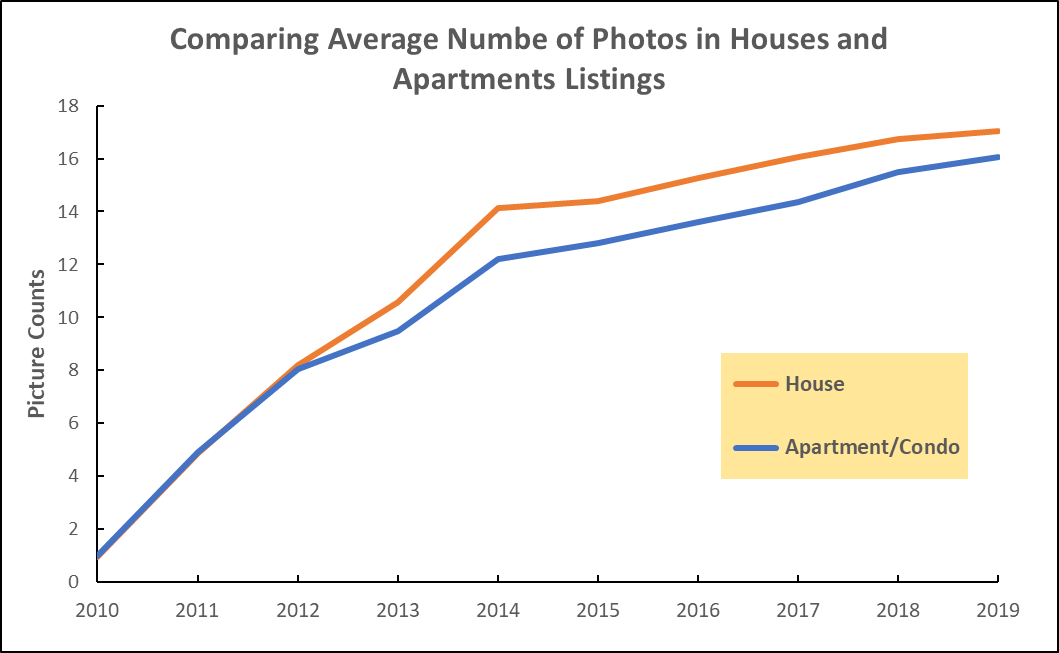
Including photos in home listings is by all accounts the simplest form of digital marketing—but it can still be effective. Based on MLS data, in 2010 the average number of photos for house listings was less than 1, suggesting that a majority of homes listed did not provide any photos at all. As the decade progressed, the number of photos per house increased. By 2014, there were 14 photos per house and, as of last year, the number was 17.
The same trend can be observed for apartments and townhouses as well. An analysis of all houses, apartments and townhouses sold in 2019 revealed that 57% of listings featured 20 or more photos, while 29% featured 10-20 and about 14% had less than ten. This illustrates that there is still much opportunity for a large number of listings to improve their digital marketing efforts.
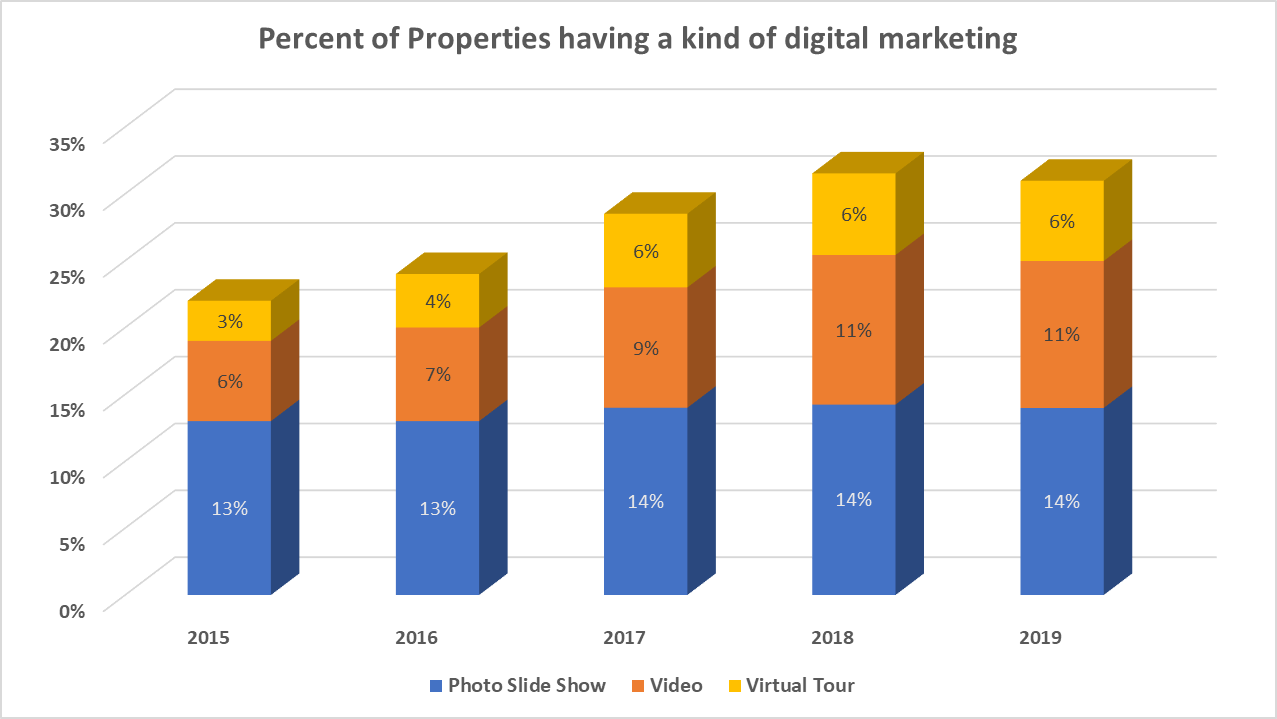
Looking at an aggregated macro-dataset of over 1 million data points based on more than 300,000 listings in Greater Vancouver, it is clear that throughout the decade, more and more properties are increasingly employing some kind of digital marketing (photo slideshows, videos or virtual tours) in the selling process. In 2015, 22% of all properties listed for sale used at least one type of digital marketing while in 2019, that number increased to around 30%. About 13%–14% of included links to a photo slideshow, while videos hosted on Youtube and Vimeo have gained prominence—instances of videos included in digital marketing increased from 6% in 2015 to 11% in 2019. Some of these videos feature a type of “virtual tour”, where the viewer is taken through a virtual walkthrough of the listing. With that said, only 17% of the market is using this technology in real estate marketing. Conditions like those brought about by the COVID-19 outbreak might encourage more virtual tours.
Do digital tours help homes sell faster or at higher prices?

Our dataset shows that between 2010 and 2019, most houses offering digital tours sold at a higher price. At its peak, from 2010 and 2012, houses tended to sell for 15-20% higher. However, more recently, that number is only about 5%. It is also not evident whether this reality occurs because the houses employing digital tours – and the more affluent agents who list them – are more expensive to begin with; or if the virtual tour technology allows sellers to reach more prospective purchasers, thereby increasing competition and driving up the price.
Additionally, in the last couple of years, house listings with digital tours have spent less time (1-6%) on the market than those without. However between 2010-2014, there was no positive effect: houses with digital tours could actually spend up to 15% more time on market than those without. This can be attributed mainly to overall higher prices.
While most homes fit this trend, homes with six or more bedrooms do not
Figure 4 illustrates that houses with 5 bedrooms or less which featured digital tours sold at a higher price in 2018 and 2019. However, this is not the case for houses with 6 or more bedrooms, where homes with or without digital tours sell at about the same price. This trend is equally true with respect to days on market (Figure 5). These realities suggest that those who are in the market for six-or-more bedroom homes are somewhat unique in their disposition, one for which the benefits of virtual tours no longer have the same effect as they do on homes with 5 or fewer bedrooms. The average house with 6 or more bedrooms sold for $1.6 million dollars.
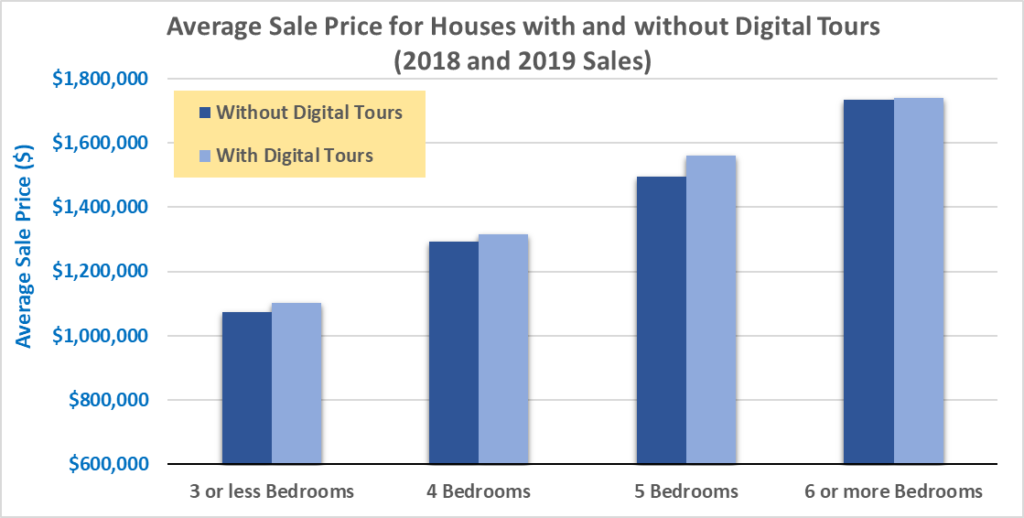
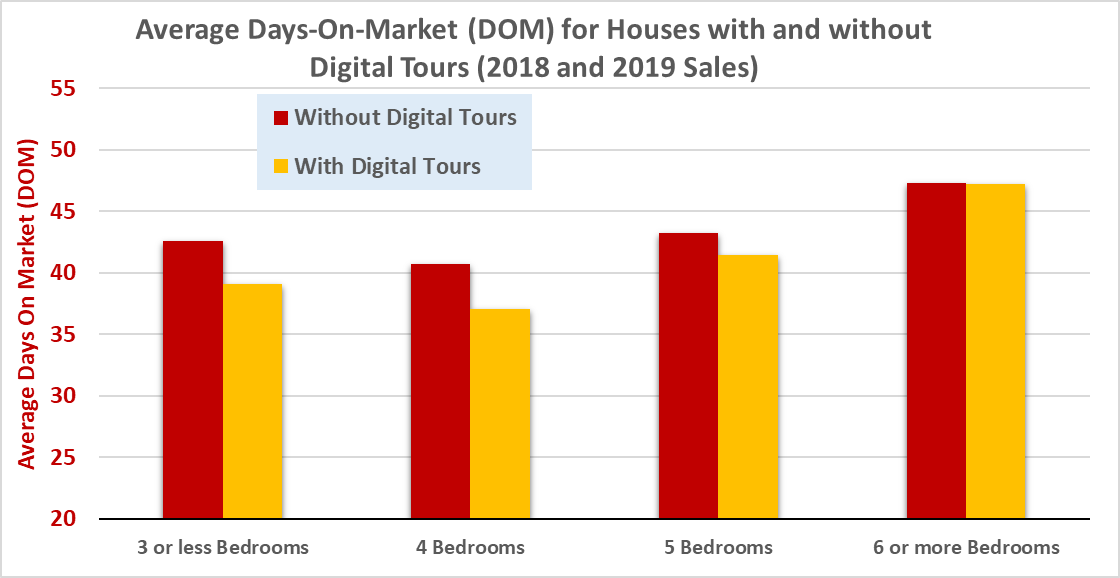
Houses older than 5 years are shown to sell faster than newer ones when using digital tours.
Another variable considered in the analysis of the impact of digital tours is the age of a particular home. The advantages of digital tours with respect to fewer days on market are most pronounced when looking at homes 6 years or older (Figure 6). This can be partly attributed to the importance of sellers highlighting renovations made on older homes. Conversely, homes that are between 0-5 years old appear to be spending at least 7 additional days – in some cases more than 30 days – when a digital tour is utilized. Further explanation of this trend can be found when examining the price of these homes (Figure 7).
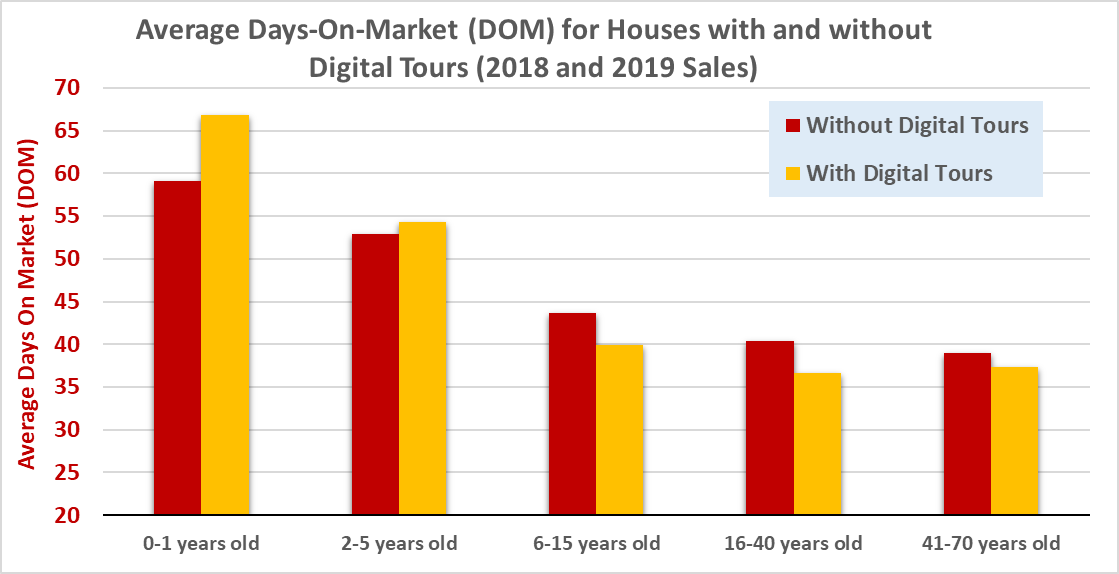
Newer homes that feature digital tours sell at much higher prices than those that do not. This can be explained partly by development companies, having already invested much in the construction process, leveraging digital tours to maximize the selling price. Perhaps because of these higher prices, the homes also spent more days on market. These data indicate that developers might be losing out on faster sales in favour of selling their new homes at a higher price.
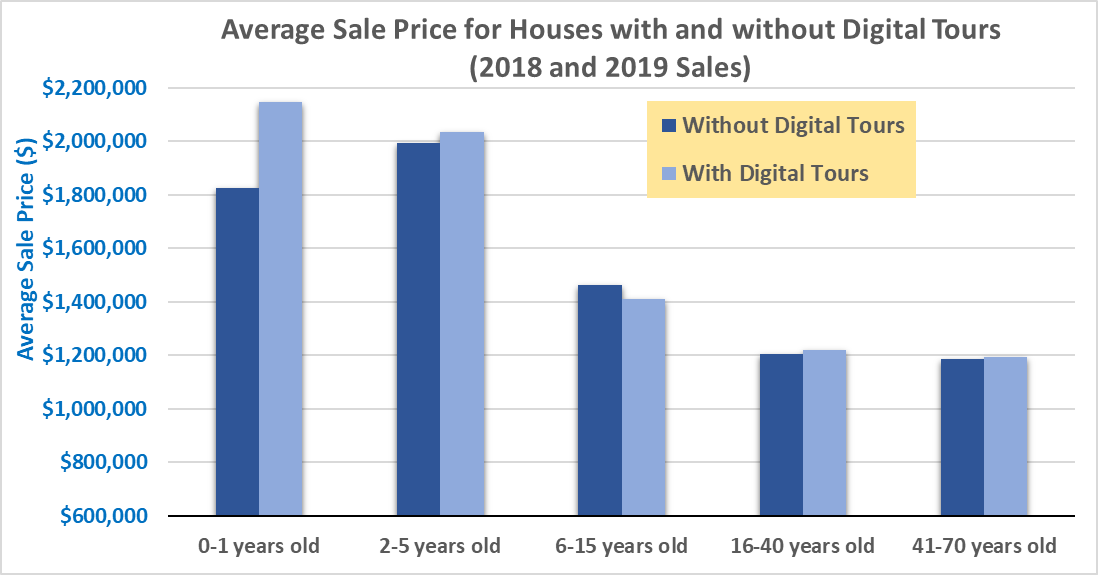
However, when it comes to older houses, prices do not differ so dramatically (sometimes slightly higher, sometimes slightly lower). Therefore it seems that digital tours for older homes serves to decrease DOM rather than increase the price.
Conclusion
It’s no surprise that in the current digital paradigm where consumers expect easy access to their finances, transportation and even medical advice, the same would ring true for real estate. What is clear from the data is that digital tours and other forms of digital marketing have become the norm.
Given the particularities of living amid the COVID-19 pandemic, there could be an even more dramatic increase for digital offerings in-place of physical ones. And while the benefits stemming from digital marketing can be more or less pronounced depending on the age and size of a home, it seems likely that digital marketing will only increase in prevalence, without a global health crisis.
